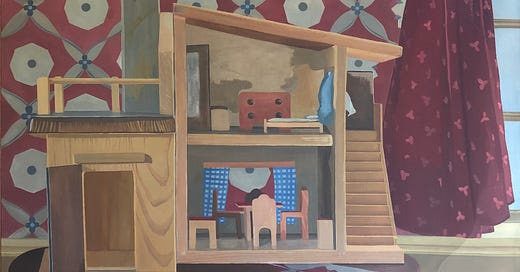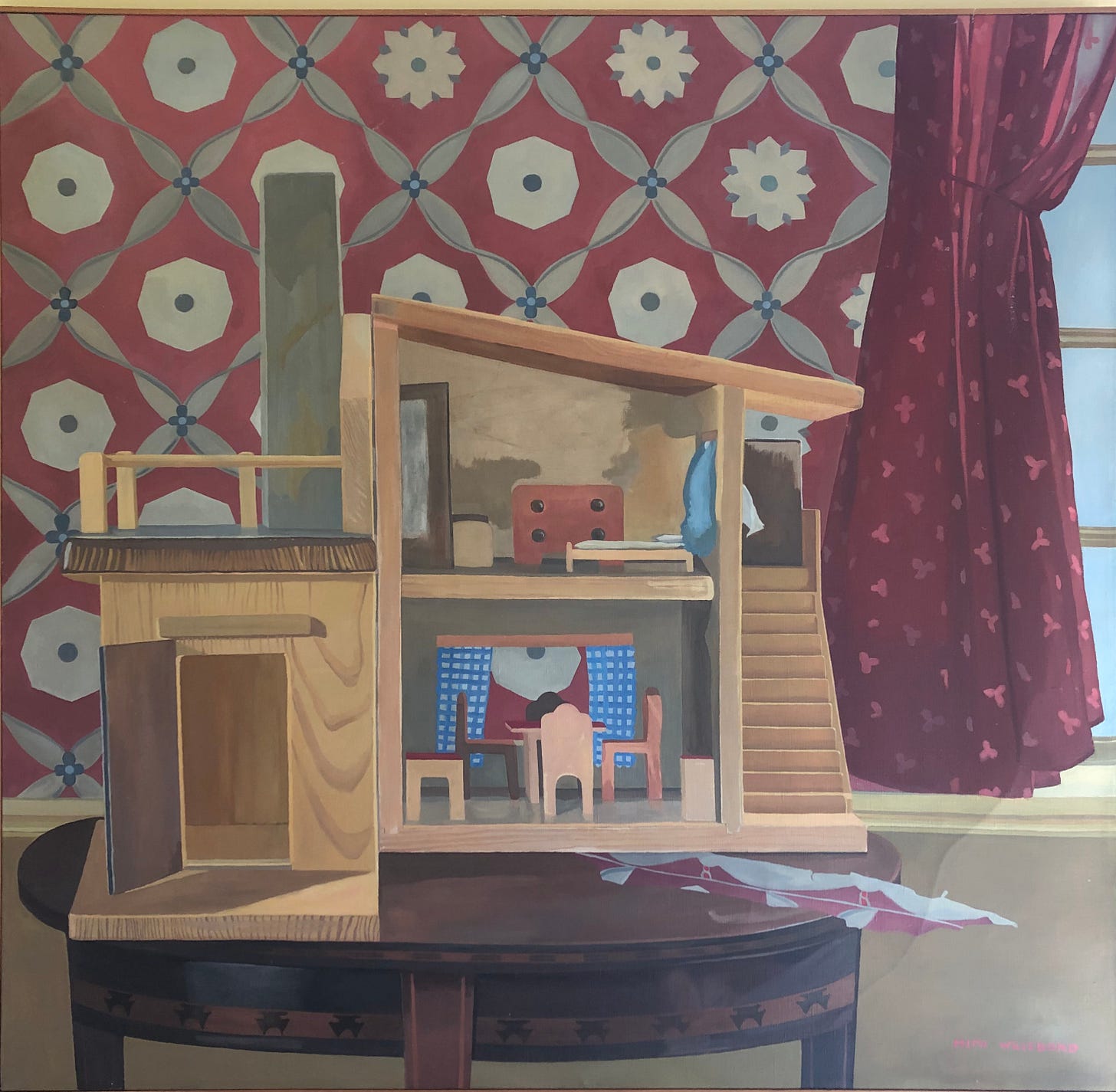On Art and Obsessions and a Dollhouse in Brooklyn
“All my work of the last fifty years, all my subjects, have found their inspiration in my childhood” - Louise Bourgeois
“Let me tell you about the dollhouse,” I fear I’ll say to anyone who’ll listen when I’m old. I’ll need to explain how it felt under my fingers before it climbed off an end table and onto my mother’s canvases. There’s a dollhouse painting above me now on my wall.
In my thirties, my mother demanded I drive hours to collect a large painting that did not fit well in her painting racks. “It’s now or never,” she declared, wanting more storage space, testing her weight and that dollhouse painting’s pull with us.
The real dollhouse, a chalet, had a roof carved like shingles. Its walls, warm and dusty, held rooms filled with beds, chairs, and tables.
At age five, I’d sit on a chair by the dollhouse as my mother made dinner. This was in our new apartment, three blocks from my father’s brownstone, where we had all lived together.
When she left him, she took most of our toys, the piano, beds, and dishes. I’d arrange the dollhouse while my brother watched Star Trek on the TV set our grandparents passed down to us.
At our father’s, the beds gone, we slept under the skylights in his painting studio on our first weekends home. He stretched diagonally on a pullout couch through the glass doors in the next room.
Downstairs, the phone rested on the floor of what had once been their bedroom. I’d lie on my stomach, dialing her number. I’d search all the closets, looking for past signs of her.
The dollhouse broke open into a wide mouth with three rooms and a set of stairs. My mother found me tiny antique furniture, a table, an upholstered chair.
But I became frustrated with the wire and rubber family that never fit in those tight spaces. A boy and a girl, a father taller than the mother (like mine, though I rarely saw them together).
When I grew bored with it, my mother made off with the little chalet. She painted it windswept, curtains blowing. Or she left a room sparse, with a single bed and bureau. Or a room empty, with just a fireplace burning.
On our birthdays, she cluttered our angel food cakes with candles, The Beatles, and Black ballerinas. Only her paintings ached with absences. I wished for people. I wished for beds in all the spaces.
Two Houses. Two Painters. Two Parents. is a newsletter of stories about art, feminism, grief, and time excavated from the Soho loft where I grew up. Posts are free and illustrated with the work of my long-divorced parents, the painters Mimi Weisbord and Lennart Anderson.





I loved this. There is something cosy/eerie, domestic/wild about a dollhouse. How extraordinary it must have been to be in the old family home but with the familiar furniture disappeared. Awful feeling of grief or disociation in the child 'you' looking for signs of her mother's presence. Amazing the things children are just expected to make sense of.
Beautiful and poignant, Eliza. The dollhouse is such a potent symbol of family life. That it lives on in your mother's paintings is wonderful.